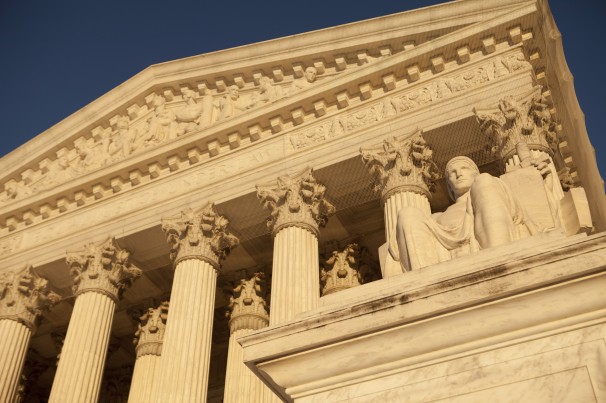The Supreme Court sided Monday with a Wyoming landowner in a dispute with the federal government that raises legal doubts about “rails-to-trails” programs that turn abandoned railroad lines into recreational venues for the public.
The court, on an 8 to 1 vote, threw out the government’s claim that it retains control of a 200-foot-wide trail that crosses part of Marvin Brandt’s 83 acres of land in Fox Park, Wyo. Brandt was the only one of dozens of landowners who objected to the government’s claim to the land and its conversion into a trail.
The railway line was abandoned in 2004. Brandt argued that the rail line was an easement, which becomes part of his property under an 1875 law. The government said the right of way reverts to the public.
Chief Justice John G. Roberts Jr. sided with Brandt. Once the railroad abandoned the line, “Brandt’s land became unburdened of the easement, conferring on him the same full rights over the right of way as he enjoyed over the rest of the Fox Park parcel,” Roberts wrote.
Justice Sonia Sotomayor was the lone dissenter. She said the government retained a “reversionary interest” when it granted the land years ago and said the decision “undermines the legality of thousands of miles of former rights of way that the public now enjoys as means of transportation and recreation.”
She added: “Lawsuits challenging the conversion of former rails to recreational trails alone may well cost American taxpayers hundreds of millions of dollars. I do not believe the law requires this result.”
During oral argument, it was unclear exactly how many miles of trails might be affected by the case, though the government said there are thousands of claims filed in 30 states.
The Rails-to-Trails Conservancy says some well-known trails on federally granted rights of way include the George S. Mickelson Trail in South Dakota, the Foothills Trail and the John Wayne Pioneer trails in Washington and the Rio Grande Trail in Colorado.
Roberts said the legal outcome followed from a 70-year-old precedent, in which the government took the opposite view on easements that it took in this case, and the chief justice channeled his inner-history major.
“In the mid-19th century, Congress began granting private railroad companies rights of way over public lands to encourage the settlement and development of the West,” he began.
One of those rights of way was given to the Laramie, Hahn’s Peak and Pacific Railroad, which had great ambitions and whose line covered about a half-mile stretch in the land Brandt came to own.
It was not to be. “Locals at the time translated the acronym LHP&P as ‘Lord Help Push and Pull’ and ‘Late, Hard Pressed and Panicky,’” Roberts wrote in a footnote.
The rail line changed hands and was eventually abandoned.
The case is Marvin M. Brandt Revocable Trust v. U.S.
